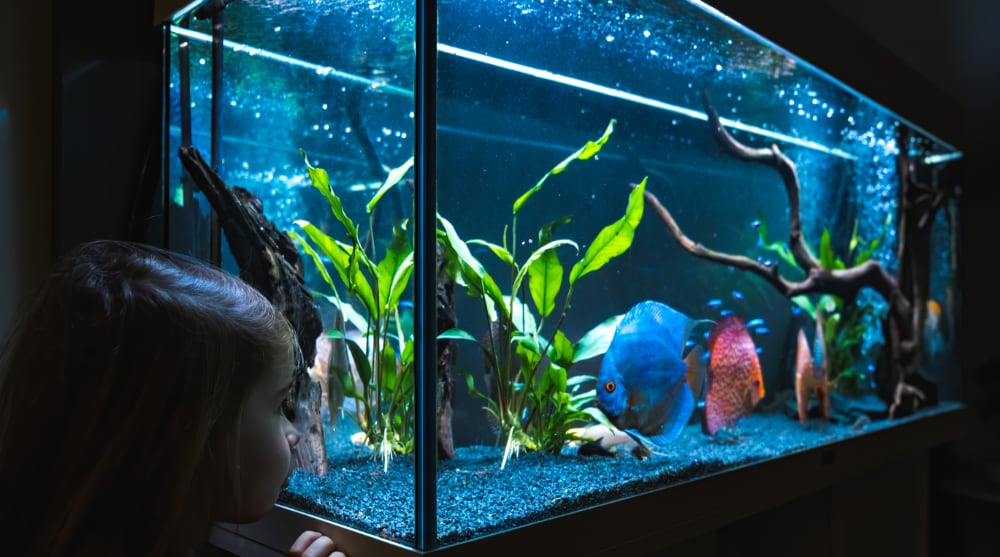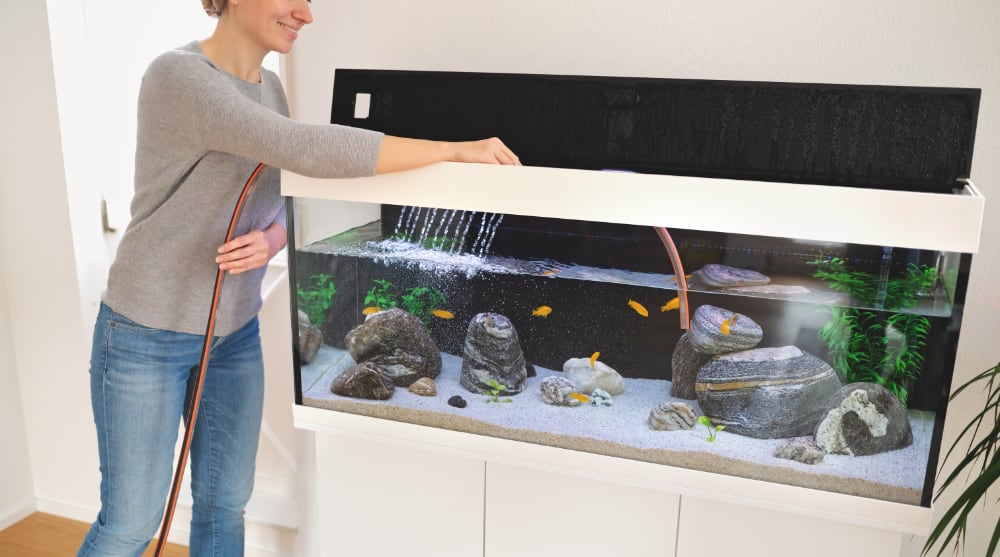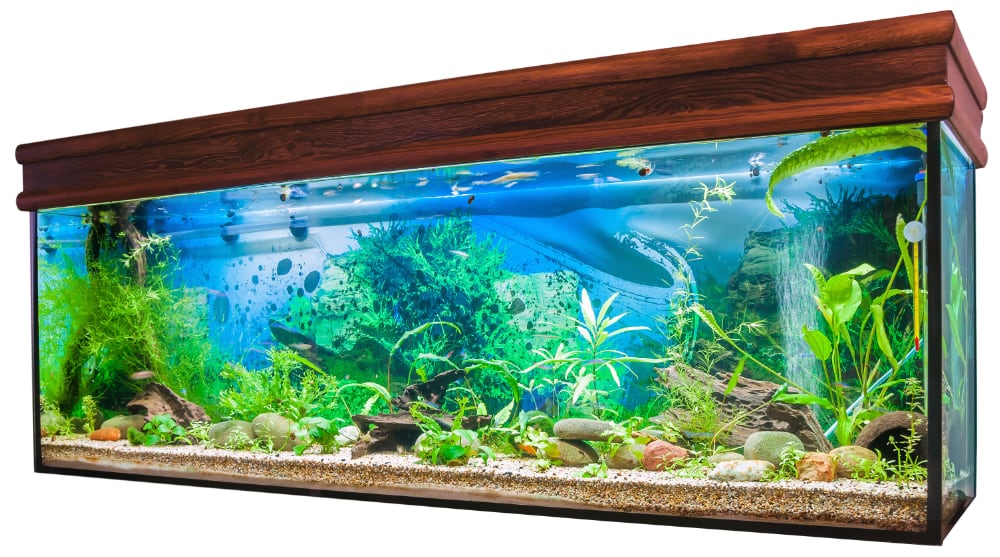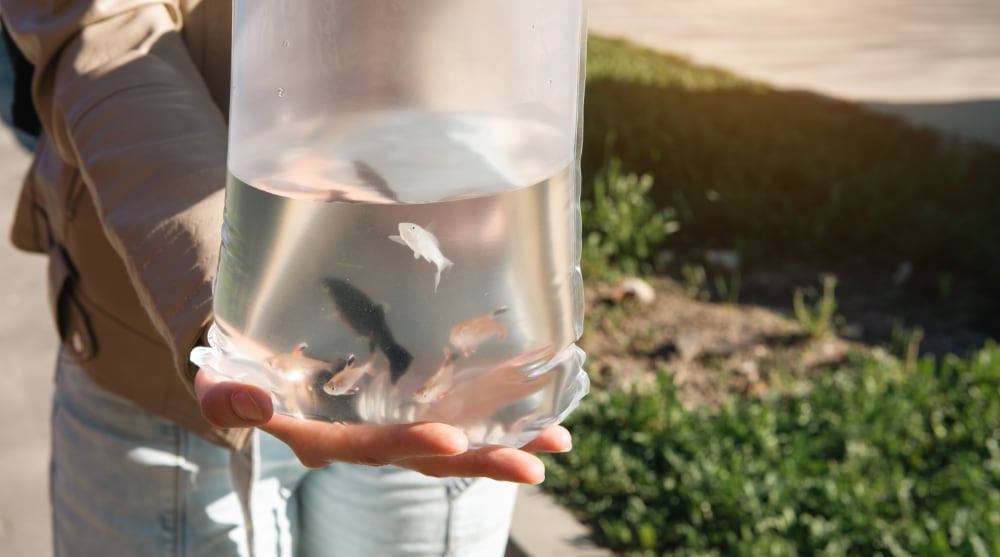Whether you are a dedicated reefer or an owner of a fish-only tank, you have probably spent thousands on keeping your swimming and growing (corals, sponges, and anemones) creatures alive and healthy. Marine and fresh-water pets are extremely delicate and require daily care, including feedings and supplements, equipment maintenance, and continuous testing of water chemistry. So even the idea of moving an aquarium to a basement or any other place at home seems terrifying, let alone transition to a new house.
Being an aquarist, you’re well aware that moving a fish tank might be a tedious and time-consuming task. So, not to get over-stressed with relocation and keep everything in check, here is a simple handbook on how to move an aquarium and keep it thriving. In fact, the checklist below will be helpful anytime you need to move a fish tank from home to a reefing exhibition.
Best way to move a fish tank
- Preparation for Moving an Aquarium
- Equipment Needed to Move a Fish Tank
- Steps to Move a Fish Tank
- During the Move: A Fish Tank
- Fish Tank Care After the Move
Preparation for Moving an Aquarium
As a hobbyist, you understand that moving an aquarium together with its resident creatures, submersible tools, and decorations is impossible. The system must be empty. Hence, you’d better prepare all required supplies beforehand.

Equipment Needed to Move a Fish Tank
So, to avoid last-minute trips to local stores, supply the following materials needed for moving an aquarium (being a passionate aquarist, many of them you might have at home, though):
- Fish containers. You might have special containers for purchasing fish at local fish stores, they suit well. Otherwise, prepare buckets (5 gallons, with lids) to accommodate larger fish or special fish bags (for a local move). Keep in mind that invertebrates, live rock, and plants require water-filled containers as well.
- Fishnet or other tools you typically use to remove fish from the system.
- Siphon hose. All aquarists know well how important it is to keep water chemistry stable and balanced and how much time it takes to achieve the conditions for fish and corals to thrive. So you have to pump water from the system into special containers (buckets can do well). Do not throw away the old tank water!
- Boxes, bubble wrap, tape, etc. Besides the tank itself, there are feeding pumps, dosers, RO units, light strips & fixtures, sumps, skimmers, auto top-offs, controllers, and many other tools and accessories to be prepared and packed. Thus, prepare enough boxes to keep your equipment safe and functional.
Oh, and a salt mix because you have to fill your system with water again ASAP. You do keep the tank water, but it is always good to have an emergency supply. You probably have a supply of salt mix for water changes, so it’s just a reminder.

Steps to Move a Fish Tank
The first thing to do before anything else is to picture your aquarium. You’ve spent a great deal of time aquascaping and setting live rocks and aqua-decor, so detailed pictures will be handy to restore the tank to its original state.
Second, you need to shorten the period invertebrates and fish spend out of the usual premises. So, planning is your principal assistant.
1. Do not feed your fish and corals at least 24 h prior to the move date. You will transport corals and fish in dedicated reservoirs and wish to keep water as clean as possible.
2. Turn off aquarium equipment, such as pumps, dosers, filters, coolers, lights, heaters, auto-feeders, etc. Disconnect all devices, dry them, and pack them properly. Note that water filters should be kept damp.
3. Any changes in the tank are stressful for its inhabitants. Even if you wish to keep creatures in the aquarium as long as possible, don’t disassemble decorations while invertebrates and fish remain in the tank. To move a fish tank with minimal stress to creatures, remove corals and fish before anything else.
4. Fill containers or plastic bags with some tank water, gently remove the fish from the system and add to the prepared containers. If required, add more water to containers and leave some air on top. Do not forget to tighten plastic bags or cover buckets with lids as some fish are known to be fidget jumpers (groupers or blennies).
5. Take plants out of the system and keep them also in water-filled containers.
6. Now you can pump out the water from the display tank to the container. It is important to keep as much old water as possible because marine aquariums are sensitive to changes in water parameters, and saltwater preparation is a time-taking process (and you want to reassemble the tank ASAP). Actually, if you own a home mini-reef, you can prepare new water beforehand to be on the safe side.
7. Remove live rock and decorations. Again, the live rock should be kept in water-filled containers. Dry off and box tank decorations.
8. Once everything is removed, collect the substrate. Rinse it well, dewater it, and pack.
9. Pack the tank. Wrapping, padding, and blankets can protect glass/acrylic panels. Fill the tank with blankets, towels, or bubble wrap or any other soft materials. Seal the box and mark it as fragile on all sides.
10. Make sure all containers and boxes are properly labeled and inventory lists are attached.

During the Move: A Fish Tank
- If you pack the system yourself, label the boxes properly and mark the box with the aquarium as fragile. Inform movers to handle the tank particularly carefully.
- No other boxes should be placed on top of the box with the tank. It is not advised to put the box with the glass tank on other boxes to prevent any sudden falls.
- All creatures in containers must stay in temperature-regulated conditions because fish, corals and other invertebrates are extremely sensitive to sudden temperature changes. In most cases, you’d better keep and move them by your car, adjusting the air condition to the suitable mode.
- The tank and submersible devices should be kept at typical room temperature prior to resetting the system. This applies particularly to regions with hot and very cold climates.

Fish Tank Care After the Move
Once all your stuff has been moved, setting back the aquarium is the top priority.
- Unpack the tank, then take all tools and devices out of boxes. Set up the system, refill the system with the substrate and old water (remember, you kept it in a labeled reservoir), and reinstall the essential equipment (skimmers, pumps, ATOs, filters, heaters/coolers, etc.) Do not get scared when water appears cloudy at first. Turn on the equipment to run the system as usual. If you have test kits, check basic parameters before adding fish and corals. Do not rush to settle aquascaping at once but provide some shelters for fish.
- Now you can add fish into the display tank. In fact, such a transition is stressful for water creatures as much as for you. So all live creatures need acclimatization; this comes as no surprise as you might be familiar with the process as you accommodate every new fish after purchasing it. Lights should be off to allow fish to adapt after staying in fish bags or containers. It is better not to feed the creatures at once (you don’t want to add unnecessary organics to the tank directly after the move).
- Now you can complete the aquascaping and add plants.
- Every now and then test the key parameters to ensure the water quality. Keep a close eye on your fish and invertebrates.
And you’re not done yet! You need around a month to ensure that the aquarium system is OK and all creatures feel well after the transition. Filters need time to adjust after moving a fish tank, so keep an eye on the nitrite, phosphate & ammonia levels, a crucial factor for any fish tank. Hence, you should keep the feeding schedule but reduce the amount of food added to the system. Test water regularly. Additionally, smaller water changes may be needed to keep the water chemistry balanced. Adding any new fish, corals, or invertebrates during the first month after the move is a big NO.

Now that you’ve read how to move a fish tank, the worries about the safety of the reef or fish system might fade away. Another important aspect is to find and hire professionals, movers with expertise in transporting delicate and easy-to-break items (a glass or acrylic tank is obviously a fracture-prone item, not to mention aquarium residents).
Request a quote from TrekMovers, California — the crew is fully qualified to handle required-special-care items. Inform a company representative that you’re moving with fish – movers will not only provide dedicated packing materials to keep the tank protected & safe but also ensure that the tank, stand, and cabinets will be set in the first instance.
